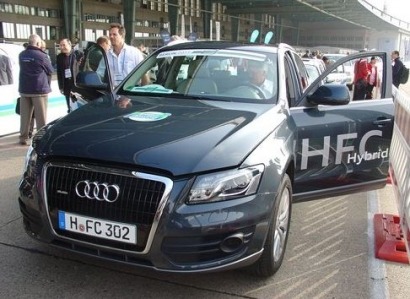
The world’s largest single FCEV and hydrogen fueling infrastructure demonstration to date was funded by the US Energy Department's Office of Energy Efficiency and Renewable Energy. The data represents some 500,000 individual vehicle trips covering 3.6 million miles traveled and 152,000 kg hydrogen produced or dispensed.
“The project results show that fuel cell electric vehicles have advanced rapidly,” said Keith Wipke, acting manager of NREL’s Fuel Cell and Hydrogen Technologies Program and the report’s lead author. “As vehicle manufacturers and other researchers worldwide continue to focus on the remaining challenges of balancing durability, cost, and high-volume manufacturability, there is optimism that manufacturers will introduce FCEVs to the market within the next few years.”
NREL’s Hydrogen Secure Data Center plays a crucial role in the independent, third-party analysis of hydrogen fuel cell technologies. While the raw data are protected in the HSDC, the public may see aggregated results through composite data products, which communicate relevant technical results without revealing proprietary data. NREL has published 99 CDPs related to fuel cell durability, vehicle driving range, on-site hydrogen production costs, and a wide variety of other topics.
The Energy Department established interim, high-level technical targets in 2003 for FCEVs and hydrogen fueling infrastructure with the goal of achieving them by 2009. The targets were:
Technical results showed that at least one of the four industry teams exceeded each of DOE’s FCEV targets for driving range and fuel cell durability, with a team achieving 254-mile driving range and a team showing projected average fuel cell stack durability of 2,521 hours. The report also evaluated a separate FCEV capable of reaching a driving range of up to 430 miles.
Low on-site hydrogen production costs were difficult to demonstrate through this project because current hydrogen stations were not designed, constructed, and used as full-scale commercial stations.
While this project did not achieve DOE’s hydrogen cost target, an independent review panel examined the issue of hydrogen production costs and determined that the production cost target could be met for at least one pathway (hydrogen produced from natural gas) in commercialized hydrogen stations at sizes comparable to gasoline stations. With increased availability of low-cost natural gas, hydrogen costs can be decreased even further.
The Learning Demonstration project started in 2004 with four major vehicle manufacturers (GM, Daimler, Hyundai-Kia, and Ford) and three energy partners (Shell, BP, and Chevron) contributing data for NREL analysis. Project costs were shared 50-50 between industry and EERE. Later, DOE’s California Hydrogen Infrastructure Project, executed by Air Products and Chemicals, Inc., contributed data on its fueling stations.
“We received final project data from our industry partners in October 2011, and have completed our analysis across the entire demonstration period,” Wipke said. “Through this project, 183 fuel cell electric vehicles were deployed, 25 project fueling stations were placed in use, and no fundamental safety issues were identified.”
The report is designed to help industry and the Energy Department evaluate progress toward market needs and DOE targets, and to focus research and development efforts where technical barriers still exist. For more information, visit NREL’s Hydrogen Fuel Cell Vehicle and Infrastructure Learning Demonstration website.
For additional information:

